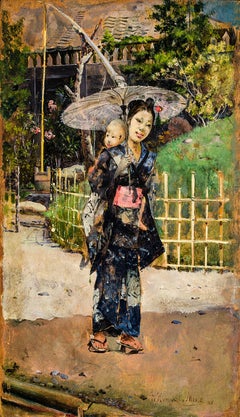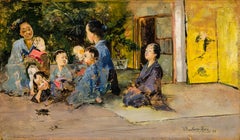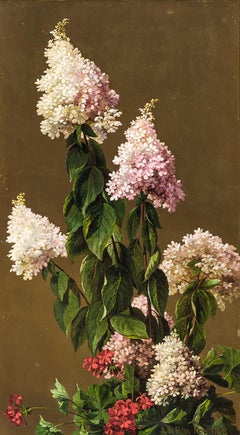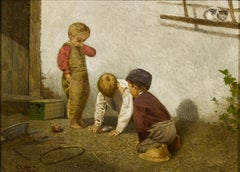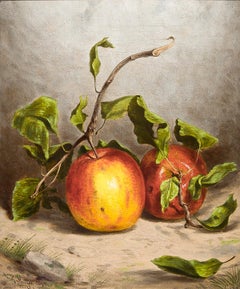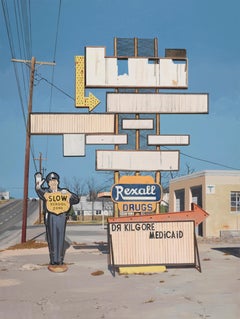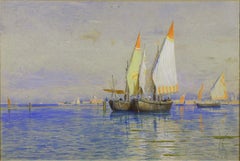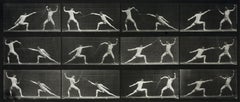Art Dealers Association of America
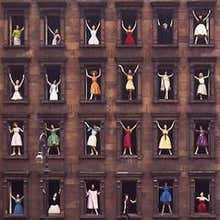
Art Dealers Association of America (ADAA)
Founded in 1962, the Art Dealers Association of America is a vetted community of more than 180 top-tier galleries across the United States. Working with these member galleries, ADAA appraisers offer assessment services for artworks spanning from the Renaissance to the present day. The ADAA also arranges public forums on important art-related topics and hosts The Art Show, presented each year at New York’s Park Avenue Armory, which stands out among art fairs for its acclaimed selection of curated booths — many of which are one-artist exhibitions.to
25
5
1
13
12
19
3
2
1
Overall Height
to
Overall Width
to
11
10
7
4
4
4
3
3
3
3
2
2
2
2
2
2
2
2
2
1
48
875
1,707
1
1
3
18
30
92
91
122
108
105
4
2
2
1
1
9
8
4
4
4
Period: Late 19th Century
Japanese Girl Promenading
By Harry Humphrey Moore
Located in New York, NY
Harry Humphrey Moore led a cosmopolitan lifestyle, dividing his time between Europe, New York City, and California. This globe-trotting painter was also active in Morocco, and most importantly, he was among the first generation of American artists to live and work in Japan, where he depicted temples, tombs, gardens, merchants, children, and Geisha girls. Praised by fellow painters such as Thomas Eakins, John Singer Sargent, and Jean-Léon Gérôme, Moore’s fame was attributed to his exotic subject matter, as well as to the “brilliant coloring, delicate brush work [sic] and the always present depth of feeling” that characterized his work (Eugene A. Hajdel, Harry H. Moore, American 19th Century: Collection of Information on Harry Humphrey Moore, 19th Century Artist, Based on His Scrap Book and Other Data [Jersey City, New Jersey: privately published, 1950], p. 8).
Born in New York City, Moore was the son of Captain George Humphrey, an affluent shipbuilder, and a descendant of the English painter, Ozias Humphrey (1742–1810). He became deaf at age three, and later went to special schools where he learned lip-reading and sign language. After developing an interest in art as a young boy, Moore studied painting with the portraitist Samuel Waugh in Philadelphia, where he met and became friendly with Eakins. He also received instruction from the painter Louis Bail in New Haven, Connecticut. In 1864, Moore attended classes at the Mark Hopkins Institute in San Francisco, and until 1907, he would visit the “City by the Bay” regularly.
In 1865, Moore went to Europe, spending time in Munich before traveling to Paris, where, in October 1866, he resumed his formal training in Gérôme’s atelier, drawing inspiration from his teacher’s emphasis on authentic detail and his taste for picturesque genre subjects. There, Moore worked alongside Eakins, who had mastered sign language in order to communicate with his friend. In March 1867, Moore enrolled at the prestigious École des Beaux-Arts, honing his drawing skills under the tutelage of Adolphe Yvon, among other leading French painters.
In December 1869, Moore traveled around Spain with Eakins and the Philadelphia engraver, William Sartain. In 1870, he went to Madrid, where he met the Spanish painters Mariano Fortuny and Martin Rico y Ortega. When Eakins and Sartain returned to Paris, Moore remained in Spain, painting depictions of Moorish life in cities such as Segovia and Granada and fraternizing with upper-crust society. In 1872, he married Isabella de Cistue, the well-connected daughter of Colonel Cistue of Saragossa, who was related to the Queen of Spain. For the next two-and-a-half years, the couple lived in Morocco, where Moore painted portraits, interiors, and streetscapes, often accompanied by an armed guard (courtesy of the Grand Sharif) when painting outdoors. (For this aspect of Moore’s oeuvre, see Gerald M. Ackerman, American Orientalists [Courbevoie, France: ACR Édition, 1994], pp. 135–39.) In 1873, he went to Rome, spending two years studying with Fortuny, whose lively technique, bright palette, and penchant for small-format genre scenes made a lasting impression on him. By this point in his career, Moore had emerged as a “rapid workman” who could “finish a picture of given size and containing a given subject quicker than most painters whose style is more simple and less exacting” (New York Times, as quoted in Hajdel, p. 23).
In 1874, Moore settled in New York City, maintaining a studio on East 14th Street, where he would remain until 1880. During these years, he participated intermittently in the annuals of the National Academy of Design in New York and the Pennsylvania Academy of the Fine Arts in Philadelphia, exhibiting Moorish subjects and views of Spain. A well-known figure in Bay Area art circles, Moore had a one-man show at the Snow & May Gallery in San Francisco in 1877, and a solo exhibition at the Bohemian Club, also in San Francisco, in 1880. Indeed, Moore fraternized with many members of the city’s cultural elite, including Katherine Birdsall Johnson (1834–1893), a philanthropist and art collector who owned The Captive (current location unknown), one of his Orientalist subjects. (Johnson’s ownership of The Captive was reported in L. K., “A Popular Paris Artist,” New York Times, July 23, 1893.) According to one contemporary account, Johnson invited Moore and his wife to accompany her on a trip to Japan in 1880 and they readily accepted. (For Johnson’s connection to Moore’s visit to Japan, see Emma Willard and Her Pupils; or, Fifty Years of Troy Female Seminary [New York: Mrs. Russell Sage, 1898]. Johnson’s bond with the Moores was obviously strong, evidenced by the fact that she left them $25,000.00 in her will, which was published in the San Francisco Call on December 10, 1893.) That Moore would be receptive to making the arduous voyage across the Pacific is understandable in view of his penchant for foreign motifs. Having opened its doors to trade with the West in 1854, and in the wake of Japan’s presence at the Philadelphia Centennial Exposition of 1876, American artists were becoming increasingly fascinated by what one commentator referred to as that “ideal dreamland of the poet” (L. K., “A Popular Paris Artist”).
Moore, who was in Japan during 1880–81, became one of the first American artists to travel to the “land of the rising sun,” preceded only by the illustrator, William Heime, who went there in 1851 in conjunction with the Japanese expedition of Commodore Matthew C. Perry; Edward Kern, a topographical artist and explorer who mapped the Japanese coast in 1855; and the Boston landscapist, Winckleworth Allan Gay, a resident of Japan from 1877 to 1880. More specifically, as William H. Gerdts has pointed out, Moore was the “first American painter to seriously address the appearance and mores of the Japanese people” (William H. Gerdts, American Artists in Japan, 1859–1925, exhib. cat. [New York: Hollis Taggart Galleries, 1996], p. 5).
During his sojourn in Japan, Moore spent time in Tokyo, Yokohama, Kyoto, Nikko, and Osaka, carefully observing the local citizenry, their manners and mode of dress, and the country’s distinctive architecture. Working on easily portable panels, he created about sixty scenes of daily life, among them this sparkling portrayal of a young woman dressed in a traditional kimono and carrying a baby on her back, a paper parasol...
Category
Late 19th Century Art Dealers Association of America
Materials
Oil, Wood Panel
Japanese Children with Tortoise
By Harry Humphrey Moore
Located in New York, NY
Harry Humphrey Moore led a cosmopolitan lifestyle, dividing his time between Europe, New York City, and California. This globe-trotting painter was also active in Morocco, and most importantly, he was among the first generation of American artists to live and work in Japan, where he depicted temples, tombs, gardens, merchants, children, and Geisha girls. Praised by fellow painters such as Thomas Eakins, John Singer Sargent, and Jean-Léon Gérôme, Moore’s fame was attributed to his exotic subject matter, as well as to the “brilliant coloring, delicate brush work [sic] and the always present depth of feeling” that characterized his work (Eugene A. Hajdel, Harry H. Moore, American 19th Century: Collection of Information on Harry Humphrey Moore, 19th Century Artist, Based on His Scrap Book and Other Data [Jersey City, New Jersey: privately published, 1950], p. 8).
Born in New York City, Moore was the son of Captain George Humphrey, an affluent shipbuilder, and a descendant of the English painter, Ozias Humphrey (1742–1810). He became deaf at age three, and later went to special schools where he learned lip-reading and sign language. After developing an interest in art as a young boy, Moore studied painting with the portraitist Samuel Waugh in Philadelphia, where he met and became friendly with Eakins. He also received instruction from the painter Louis Bail in New Haven, Connecticut. In 1864, Moore attended classes at the Mark Hopkins Institute in San Francisco, and until 1907, he would visit the “City by the Bay” regularly.
In 1865, Moore went to Europe, spending time in Munich before traveling to Paris, where, in October 1866, he resumed his formal training in Gérôme’s atelier, drawing inspiration from his teacher’s emphasis on authentic detail and his taste for picturesque genre subjects. There, Moore worked alongside Eakins, who had mastered sign language in order to communicate with his friend. In March 1867, Moore enrolled at the prestigious École des Beaux-Arts, honing his drawing skills under the tutelage of Adolphe...
Category
Late 19th Century Art Dealers Association of America
Materials
Oil, Wood Panel
Hydrangeas and Other Garden Flowers
By John Ross Key
Located in New York, NY
Signed (at lower right): John Ross Key 1882
Category
Late 19th Century American Realist Art Dealers Association of America
Materials
Canvas, Oil
His Only Pet
Located in New York, NY
Charles Caleb Ward was born in St. John, New Brunswick, Canada, the grandson of a New York Ward who had left for New Brunswick around the time of th...
Category
Late 19th Century American Realist Art Dealers Association of America
Materials
Oil, Board
Rowing Home the Schoof-Stuff, Life and Landscape on the Norfolk Broads
By P.H. Emerson
Located in Santa Monica, CA
Vintage platinum/palladium print
66NNF
Titled in pencil on recto
Variously numbered in pencil with plate number printed on verso.
The English photographer, Peter Henry Emerson, promoted photography as an independent art form and created an aesthetic theory called “naturalistic photography.” Trained as a physician, Emerson first began to photograph as part of an anthropological study of the peasants and fishermen of East Anglia. These black-and-white photographs, published in books such as Life and Landscape on the Norfolk Broads...
Category
Late 19th Century Art Dealers Association of America
Materials
Platinum
Still Life with Apples
By William Rickarby Miller
Located in New York, NY
Signed and dated (at lower left): W. R. Miller 1891; (at lower right): No. 10
Category
Late 19th Century American Realist Art Dealers Association of America
Materials
Canvas, Oil
Japanese Tea Garden
By Harry Humphrey Moore
Located in New York, NY
Harry Humphrey Moore led a cosmopolitan lifestyle, dividing his time between Europe, New York City, and California. This globe-trotting painter was also active in Morocco, and most importantly, he was among the first generation of American artists to live and work in Japan, where he depicted temples, tombs, gardens, merchants, children, and Geisha girls. Praised by fellow painters such as Thomas Eakins, John Singer Sargent, and Jean-Léon Gérôme, Moore’s fame was attributed to his exotic subject matter, as well as to the “brilliant coloring, delicate brush work [sic] and the always present depth of feeling” that characterized his work (Eugene A. Hajdel, Harry H. Moore, American 19th Century: Collection of Information on Harry Humphrey Moore, 19th Century Artist, Based on His Scrap Book and Other Data [Jersey City, New Jersey: privately published, 1950], p. 8).
Born in New York City, Moore was the son of Captain George Humphrey, an affluent shipbuilder, and a descendant of the English painter, Ozias Humphrey (1742–1810). He became deaf at age three, and later went to special schools where he learned lip-reading and sign language. After developing an interest in art as a young boy, Moore studied painting with the portraitist Samuel Waugh in Philadelphia, where he met and became friendly with Eakins. He also received instruction from the painter Louis Bail in New Haven, Connecticut. In 1864, Moore attended classes at the Mark Hopkins Institute in San Francisco, and until 1907, he would visit the “City by the Bay” regularly.
In 1865, Moore went to Europe, spending time in Munich before traveling to Paris, where, in October 1866, he resumed his formal training in Gérôme’s atelier, drawing inspiration from his teacher’s emphasis on authentic detail and his taste for picturesque genre subjects. There, Moore worked alongside Eakins, who had mastered sign language in order to communicate with his friend. In March 1867, Moore enrolled at the prestigious École des Beaux-Arts, honing his drawing skills under the tutelage of Adolphe Yvon, among other leading French painters.
In December 1869, Moore traveled around Spain with Eakins and the Philadelphia engraver, William Sartain. In 1870, he went to Madrid, where he met the Spanish painters Mariano Fortuny and Martin Rico y Ortega. When Eakins and Sartain returned to Paris, Moore remained in Spain, painting depictions of Moorish life in cities such as Segovia and Granada and fraternizing with upper-crust society. In 1872, he married Isabella de Cistue, the well-connected daughter of Colonel Cistue of Saragossa, who was related to the Queen of Spain. For the next two-and-a-half years, the couple lived in Morocco, where Moore painted portraits, interiors, and streetscapes, often accompanied by an armed guard (courtesy of the Grand Sharif) when painting outdoors. (For this aspect of Moore’s oeuvre, see Gerald M. Ackerman, American Orientalists [Courbevoie, France: ACR Édition, 1994], pp. 135–39.) In 1873, he went to Rome, spending two years studying with Fortuny, whose lively technique, bright palette, and penchant for small-format genre scenes made a lasting impression on him. By this point in his career, Moore had emerged as a “rapid workman” who could “finish a picture of given size and containing a given subject quicker than most painters whose style is more simple and less exacting” (New York Times, as quoted in Hajdel, p. 23).
In 1874, Moore settled in New York City, maintaining a studio on East 14th Street, where he would remain until 1880. During these years, he participated intermittently in the annuals of the National Academy of Design in New York and the Pennsylvania Academy of the Fine Arts in Philadelphia, exhibiting Moorish subjects and views of Spain. A well-known figure in Bay Area art circles, Moore had a one-man show at the Snow & May Gallery in San Francisco in 1877, and a solo exhibition at the Bohemian Club, also in San Francisco, in 1880. Indeed, Moore fraternized with many members of the city’s cultural elite, including Katherine Birdsall Johnson (1834–1893), a philanthropist and art collector who owned The Captive (current location unknown), one of his Orientalist subjects. (Johnson’s ownership of The Captive was reported in L. K., “A Popular Paris Artist,” New York Times, July 23, 1893.) According to one contemporary account, Johnson invited Moore and his wife to accompany her on a trip to Japan in 1880 and they readily accepted. (For Johnson’s connection to Moore’s visit to Japan, see Emma Willard and Her Pupils; or, Fifty Years of Troy Female Seminary [New York: Mrs. Russell Sage, 1898]. Johnson’s bond with the Moores was obviously strong, evidenced by the fact that she left them $25,000.00 in her will, which was published in the San Francisco Call on December 10, 1893.) That Moore would be receptive to making the arduous voyage across the Pacific is understandable in view of his penchant for foreign motifs. Having opened its doors to trade with the West in 1854, and in the wake of Japan’s presence at the Philadelphia Centennial Exposition of 1876, American artists were becoming increasingly fascinated by what one commentator referred to as that “ideal dreamland of the poet” (L. K., “A Popular Paris Artist”).
Moore, who was in Japan during 1880–81, became one of the first American artists to travel to the “land of the rising sun,” preceded only by the illustrator, William Heime, who went there in 1851 in conjunction with the Japanese expedition of Commodore Matthew C. Perry; Edward Kern, a topographical artist and explorer who mapped the Japanese coast in 1855; and the Boston landscapist, Winckleworth Allan Gay, a resident of Japan from 1877 to 1880. More specifically, as William H. Gerdts has pointed out, Moore was the “first American painter to seriously address the appearance and mores of the Japanese people” (William H. Gerdts, American Artists in Japan, 1859–1925, exhib. cat. [New York: Hollis Taggart Galleries, 1996], p. 5).
During his sojourn in Japan, Moore spent time in Tokyo, Yokohama, Kyoto, Nikko, and Osaka, carefully observing the local citizenry, their manners and mode of dress, and the country’s distinctive architecture. Working on easily portable wood panels, he created about sixty scenes of daily life, among them this picturesque vignette of a Japanese tea garden...
Category
Late 19th Century Art Dealers Association of America
Materials
Oil, Wood Panel
Interior of a Japanese House
By Harry Humphrey Moore
Located in New York, NY
Harry Humphrey Moore led a cosmopolitan lifestyle, dividing his time between Europe, New York City, and California. This globe-trotting painter was also active in Morocco, and most importantly, he was among the first generation of American artists to live and work in Japan, where he depicted temples, tombs, gardens, merchants, children, and Geisha girls. Praised by fellow painters such as Thomas Eakins, John Singer Sargent, and Jean-Léon Gérôme, Moore’s fame was attributed to his exotic subject matter, as well as to the “brilliant coloring, delicate brush work [sic] and the always present depth of feeling” that characterized his work (Eugene A. Hajdel, Harry H. Moore, American 19th Century: Collection of Information on Harry Humphrey Moore, 19th Century Artist, Based on His Scrap Book and Other Data [Jersey City, New Jersey: privately published, 1950], p. 8).
Born in New York City, Moore was the son of Captain George Humphrey, an affluent shipbuilder, and a descendant of the English painter, Ozias Humphrey (1742–1810). He became deaf at age three, and later went to special schools where he learned lip-reading and sign language. After developing an interest in art as a young boy, Moore studied painting with the portraitist Samuel Waugh in Philadelphia, where he met and became friendly with Eakins. He also received instruction from the painter Louis Bail in New Haven, Connecticut. In 1864, Moore attended classes at the Mark Hopkins Institute in San Francisco, and until 1907, he would visit the “City by the Bay” regularly.
In 1865, Moore went to Europe, spending time in Munich before traveling to Paris, where, in October 1866, he resumed his formal training in Gérôme’s atelier, drawing inspiration from his teacher’s emphasis on authentic detail and his taste for picturesque genre subjects. There, Moore worked alongside Eakins, who had mastered sign language in order to communicate with his friend. In March 1867, Moore enrolled at the prestigious École des Beaux-Arts, honing his drawing skills under the tutelage of Adolphe Yvon, among other leading French painters.
In December 1869, Moore traveled around Spain with Eakins and the Philadelphia engraver, William Sartain. In 1870, he went to Madrid, where he met the Spanish painters Mariano Fortuny and Martin Rico y Ortega. When Eakins and Sartain returned to Paris, Moore remained in Spain, painting depictions of Moorish life in cities such as Segovia and Granada and fraternizing with upper-crust society. In 1872, he married Isabella de Cistue, the well-connected daughter of Colonel Cistue of Saragossa, who was related to the Queen of Spain. For the next two-and-a-half years, the couple lived in Morocco, where Moore painted portraits, interiors, and streetscapes, often accompanied by an armed guard (courtesy of the Grand Sharif) when painting outdoors. (For this aspect of Moore’s oeuvre, see Gerald M. Ackerman, American Orientalists [Courbevoie, France: ACR Édition, 1994], pp. 135–39.) In 1873, he went to Rome, spending two years studying with Fortuny, whose lively technique, bright palette, and penchant for small-format genre scenes made a lasting impression on him. By this point in his career, Moore had emerged as a “rapid workman” who could “finish a picture of given size and containing a given subject quicker than most painters whose style is more simple and less exacting” (New York Times, as quoted in Hajdel, p. 23).
In 1874, Moore settled in New York City, maintaining a studio on East 14th Street, where he would remain until 1880. During these years, he participated intermittently in the annuals of the National Academy of Design in New York and the Pennsylvania Academy of the Fine Arts in Philadelphia, exhibiting Moorish subjects and views of Spain. A well-known figure in Bay Area art circles, Moore had a one-man show at the Snow & May Gallery in San Francisco in 1877, and a solo exhibition at the Bohemian Club, also in San Francisco, in 1880. Indeed, Moore fraternized with many members of the city’s cultural elite, including Katherine Birdsall Johnson (1834–1893), a philanthropist and art collector who owned The Captive (current location unknown), one of his Orientalist subjects. (Johnson’s ownership of The Captive was reported in L. K., “A Popular Paris Artist,” New York Times, July 23, 1893.) According to one contemporary account, Johnson invited Moore and his wife to accompany her on a trip to Japan in 1880 and they readily accepted. (For Johnson’s connection to Moore’s visit to Japan, see Emma Willard and Her Pupils; or, Fifty Years of Troy Female Seminary [New York: Mrs. Russell Sage, 1898]. Johnson’s bond with the Moores was obviously strong, evidenced by the fact that she left them $25,000.00 in her will, which was published in the San Francisco Call on December 10, 1893.) That Moore would be receptive to making the arduous voyage across the Pacific is understandable in view of his penchant for foreign motifs. Having opened its doors to trade with the West in 1854, and in the wake of Japan’s presence at the Philadelphia Centennial Exposition of 1876, American artists were becoming increasingly fascinated by what one commentator referred to as that “ideal dreamland of the poet” (L. K., “A Popular Paris Artist”).
Moore, who was in Japan during 1880–81, became one of the first American artists to travel to the “land of the rising sun,” preceded only by the illustrator, William Heime, who went there in 1851 in conjunction with the Japanese expedition of Commodore Matthew C. Perry; Edward Kern, a topographical artist and explorer who mapped the Japanese coast in 1855; and the Boston landscapist, Winckleworth Allan Gay, a resident of Japan from 1877 to 1880. More specifically, as William H. Gerdts has pointed out, Moore was the “first American painter to seriously address the appearance and mores of the Japanese people” (William H. Gerdts, American Artists in Japan, 1859–1925, exhib. cat. [New York: Hollis Taggart Galleries, 1996], p. 5).
During his sojourn in Nippon (which means, “The Land of the Rising Sun”), Moore spent time in locales such as Tokyo, Yokohama, Kyoto, Nikko, and Osaka, carefully observing the local citizenry, their manners and mode of dress, and the country’s distinctive architecture. Working on easily portable panels, he created about sixty scenes of daily life, among them this depiction of an interior of a dwelling. The location of the view is unknown, but the presence of a rustic rail fence demarcating a yard bordering a distant house flanked by tall trees, shrubs and some blossoming fruit trees, suggests that the work likely portrays a building in a city suburb or a small village.
In his book, Japanese Homes and Their Surroundings, Edward S. Morse (an American zoologist, orientalist, and “japanophile” who taught at Tokyo Imperial University from 1877 to 1879, and visited Japan again in 1891 and 1882) noted the “openness and accessibility of the Japanese house...
Category
Late 19th Century Art Dealers Association of America
Materials
Oil, Wood Panel
Golden Rod and other Wildflowers
By John Ross Key
Located in New York, NY
Signed (at lower right): John Ross Key 1882
Category
Late 19th Century American Realist Art Dealers Association of America
Materials
Canvas, Oil
Brookside
Located in New York, NY
Signed (at lower right): C A Walker
Category
Late 19th Century American Realist Art Dealers Association of America
Materials
Monotype
Stiff Life of Peaches, Plums, and Grapes
By William Hough
Located in New York, NY
The Victorian still-life painter William Hough began his career working in Coventry and later moved to London. He exhibited flower and fruit still lifes at the Royal Academy and at t...
Category
Late 19th Century Realist Art Dealers Association of America
Materials
Paper, Watercolor
n Memory of the Great Fire at Chicago (Cartoon for the Mural Lunette in the Chic
Located in New York, NY
On October 8, 1871, one of the greatest fires of modern times broke out in Chicago. Engulfing the entire city within hours, it left over 90,000 people homeless and destroyed thousands of buildings, causing many people to flee into the water to escape the flames. Among the property destroyed were the proudest cultural and civic institutions of the city. While the financial center was rebuilt within a year and trade was greater in 1872 than it had been in 1870, it took over a decade for the city’s cultural resources to recover from the disaster. Many of the city’s best artists did not even return to Chicago for several years. Foreign aid poured in from around the world, with half coming from England alone. It is not surprising therefore, that in 1872 it was an English artist that should have designed the mural for City Hall commemorating the Great Fire...
Category
Late 19th Century Realist Art Dealers Association of America
Materials
Paper, Charcoal
Lotus
Located in Santa Monica, CA
Vintage Hand Colored Albumen Print
Category
Late 19th Century Art Dealers Association of America
A Reed-Cutter at Work
By P.H. Emerson
Located in Santa Monica, CA
A Reed-Cutter at Work [Plate XXV from the Album, Life and Landscape on the Norfolk Broads], 1886
Vintage Platinum/Palladium Print
Mount 16 1/8 x 11 3/8 inches; Image 11 1/8 x 8 inche...
Category
Late 19th Century Art Dealers Association of America
Materials
Platinum
Loguivy, Paysage de Bretagne
By Lucien Ott
Located in Dallas, TX
Ott was part of a generation of painters at the end of the 19th century for whom drawing was the greatest mode of expression. This watercolor was painted at Loguivy in Bretagne where...
Category
Late 19th Century Art Dealers Association of America
Camellia
Located in Santa Monica, CA
Vintage Hand Colored Albumen print
Category
Late 19th Century Art Dealers Association of America
Night Fishing at Saint Maurice
By Emile Noirot
Located in Dallas, TX
signed "Emile Noirot 1893" at lower right
overall dimensions, including frame, are 19 3/4 x 23 5/8 inches
Category
1890s Academic Art Dealers Association of America
Materials
Ink, Paper
Chrysanthemum Yukidoro
Located in Santa Monica, CA
Vintage Hand Colored Albumen Print
Category
Late 19th Century Art Dealers Association of America
Chrysanthemum (Senjogataki)
Located in Santa Monica, CA
Vintage Hand Colored Albumen print
Category
Late 19th Century Art Dealers Association of America
Japanese Woman
Located in Santa Monica, CA
Vintage Albumen print
Category
Late 19th Century Art Dealers Association of America
Profile of a Japanese Woman
Located in Santa Monica, CA
Vintage Hand Colored Albumen print
Category
Late 19th Century Art Dealers Association of America
Chrysanthemum (1 Washigamine 2 Riukonoisami)
Located in Santa Monica, CA
Vintage Hand Colored Albumen print
Category
Late 19th Century Art Dealers Association of America
Japanese Woman (with instrument)
Located in Santa Monica, CA
Vintage Hand Colored Albumen print
Category
Late 19th Century Art Dealers Association of America
The Decoration of Monte Carlo
Located in Dallas, TX
This late 19th century French pen and ink drawing depicts the decoration of Monte Carlo by Lucas and George Clairin (French, 1843-1919). The price inc...
Category
Late 19th Century Art Dealers Association of America
Materials
Ink
Human and Animal Locomotion. Plate 49.
By Eadweard Muybridge
Located in New York, NY
Human and Animal Locomotion. Plate 49.
"Walking and turning around rapidly, a satchel in one hand, cane in the other."
14 x 20 inch original collot...
Category
1880s Art Dealers Association of America
Materials
Photographic Paper
Related Items
Colorful and Blue American Contemporary Oil of Funny Sign Reading, "Drugs."
Located in Fort Worth, TX
Caduceus, 2011, Daniel Blagg, Oil on canvas, 80 x 60"
By meticulously depicting forgotten road signs and roadside debris, Daniel Blagg invites his viewe...
Category
2010s American Realist Art Dealers Association of America
Materials
Oil, Canvas, Acrylic
H 80 in W 60 in D 2.5 in
Looking outside
By Francien Krieg
Located in PUIFLIJK, NL
Francien Krieg, a contemporary Dutch artist, gives a new dimension to figurative painting with her penetrating and unfiltered portraits. Krieg, who received her art education at the ...
Category
2010s Impressionist Art Dealers Association of America
Materials
Oil, Wood Panel
An American Still Life of an Apple, Pear and Grapes circa 1880s
Located in SANTA FE, NM
An American Still Life of an Apple, Pear and Grapes
Oil on canvas on board
Signed illegibly
circa late 1800s
9 3/4 x 5 7/8 (16 x 12 3/4 frame) inches
This is an example of late 19...
Category
Late 19th Century American Realist Art Dealers Association of America
Materials
Canvas, Oil, Board
Army Poker
Located in Los Angeles, CA
This work is part of our exhibition - America Coast to Coast: Artists of the 1940s
Army Poker, c. 1943, probably tempera on board, signed upper right, 16 x 20 inches, inscribed ver...
Category
1940s American Realist Art Dealers Association of America
Materials
Oil, Board, Tempera
Corner of AS, Original Oil Painting, Landscape
By Raphaël Renaud
Located in AIX-EN-PROVENCE, FR
Work : Original Oil Painting, Handmade Artwork, Unique Work. Ready to Hang.
Medium : Oil on coated wood.
Artist : Raphaël Renaud
Subject : Coin de AS (Title), (EN : Corner of AS). T...
Category
21st Century and Contemporary Contemporary Art Dealers Association of America
Materials
Oil, Wood Panel
Pastoral Country Landscape Travelers on a Forest Road 19th century Oil Painting
Located in Stockholm, SE
Brass plate leads to Russian artist Pavel Pavlovich Dzhogin (1834 - 1885). This 19th century oil painting beautifully captures a serene rural scene with travelers on a cart traveling...
Category
Late 19th Century Realist Art Dealers Association of America
Materials
Wood, Oil, Wood Panel
"Pitcher & Peaches" - Still Life - American Realist Painting - fruit
By Sarah Lamb
Located in Atlanta, GA
"Pitcher & Peaches" is a still life painting featuring hues of orange, yellow, tan and green.
Sarah Lamb is inspired by the work of John Singer Sargent, Wayne Thiebaud and Emil Carlsen.
This piece is framed 14 by 14 inches.
Sarah Lamb is a talented and dynamic realist painter. With classical skill—and through transparency, depth and texture—she captures the minute details of everyday objects in her dramatic still lifes and luscious landscapes. She makes us love the familiar and see beauty in the mundane. Born in Petersburg, VA, with a passion for art and an appreciation for the past, Sarah spent a semester at the Studio Art Center International in Florence, Italy before graduating from Brenau Women’s College with a BS degree in Studio Art in 1993. Following a summer workshop in Santa Fe, NM with renowned classical painter Jacob Collins, she spent two years painting at The Ecole Albert Defois in the Loire Valley with classical realist artist Ted Seth Jacobs...
Category
2010s American Realist Art Dealers Association of America
Materials
Oil, Canvas
Barend Graat (1628-1709) Diana the huntress and her dogs
Located in BELEYMAS, FR
Barend GRAAT
(Amsterdam 1628 – Amsterdam 1709)
Diana the Huntress
Oil on wood
H. 33.5 cm; L. 44 cm
Signed lower right on the stone
A discreet painter with respect to history, Barend...
Category
1650s Dutch School Art Dealers Association of America
Materials
Wood Panel, Oil
H 13.19 in W 17.33 in
Torre Velasca
Located in Milano, MI
Urbex is the English acronym for urban exploration and is an activity that consists of searching for and locating abandoned infrastructure with the goal of visiting, photographing and conveying its contents, with particular involvement of methodologies from geography, anthropology, sociology to cultural studies.
Her works have been in the past approached to the works of Anselm Kiefer (b. 1945) and Giovanni Battista Piranesi (1720-1770), but in Gullotta's paintings the absence of color makes the spaces particularly ethereal, allowing them to be ideally lifted to new places and to new life.
An artist of international caliber who has decided to entrust her return to her homeland to Almach Art Gallery in Milan, while maintaining connections with important galleries, such as Marlborough Fine Art in London and Galerie Koch in Hanover.
The artwork represents the famous Velasca Tower in Milan.
This artwork was exhibited during the Daniela Gullotta...
Category
2010s Contemporary Art Dealers Association of America
Materials
Sandstone
"Gardenias in Juliska Vase" - Still Life - American Realist Painting - botanical
By Sarah Lamb
Located in Atlanta, GA
"Gardenias in Juliska Vase" is a still life painting featuring hues of green, white, and dark blue.
Sarah Lamb is inspired by the work of John Singer Sar...
Category
2010s American Realist Art Dealers Association of America
Materials
Canvas, Oil
Low Corner of VH, Contemporary Oil Painting, Interiors, Chair
By Raphaël Renaud
Located in AIX-EN-PROVENCE, FR
Work : Original Oil Painting, Handmade Artwork, Unique Work. Ready to Hang.
Medium : Oil on coated wood.
Artist : Raphaël Renaud
Subject : Coin bas de VH (Title), (EN : Low Corner o...
Category
21st Century and Contemporary Contemporary Art Dealers Association of America
Materials
Oil, Wood Panel
H 7.88 in W 7.88 in D 1.19 in
Italian Grotto in Ruins Street Scene with Resting Family 18 Century Oil Painting
Located in Stockholm, SE
Very well executed mid-18th century artwork, rather oil study, depicts resting family sheltering from the scorching midday sun in grotto shape arch in ruined part of town. Mother fee...
Category
Mid-18th Century Realist Art Dealers Association of America
Materials
Wood, Oil, Wood Panel
Previously Available Items
Fishing Boats, Venice
By William Stanley Haseltine
Located in New York, NY
Fishing Boats, Venice recalls a time, a place, and a social circle that lived for a charmed moment and a favored few in nineteenth-century Europe. William Stanley Haseltine was an American expatriate artist who made his home and studio “into a permanent meeting ground for the many distinguished foreigners, Americans and English, who came to Rome. . . .” (Helen Haseltine Plowden, William Stanley Haseltine, Sea and Landscape Painter (1835-1900): Notes and Recollections From His Life [1947], p. 97). Among these were Louisa Crawford Ward (daughter of New York banker and art patron Samuel Ward, sister of Julia Ward Howe, and widow of American sculptor Thomas Crawford); Henry Wadsworth Longfellow; Frederick Crowninshield (Boston Brahmin poet and painter); artist Edward Darley Boit; lawyer Joseph Choate; historian George Bancroft; writer Charles Francis Adams; and financier Junius Spencer Morgan, father of John Pierrepont Morgan, the original owner of this work. From 1874 until the artist's death, the family lived in the Palazzo Altieri, a sixteenth-century residence built by Cardinal Gian Battista Altieri Seniore and his uncle Pope Clement X. The Haseltines gathered together under their splendid and commodious roof an international literary, cultural, and artistic salon with a distinctly American accent.
The career of William Stanley Haseltine spans the entire second half of the nineteenth century. During these years he witnessed the growth and decline of American landscape painting, the new concept of plein-air painting practiced by the Barbizon artists, and the revolutionary techniques of the French Impressionists, all of which had profound effects on the development of painting in the western world. Haseltine remained open to these new developments, selecting aspects of each and assimilating them into his work. What remained constant was his love of nature and his skill at rendering exactly what he saw. His views, at once precise and poetic, are, in effect, portraits of the many places he visited and the landscapes he loved.
Haseltine was born in Philadelphia, the son of a prosperous businessman. In 1850, at the age of fifteen, he began studying with Paul Weber, a German artist who had settled in Philadelphia two years earlier. From Weber, Haseltine learned about Romanticism and the meticulous draftsmanship that characterized the German School. At the same time, Haseltine enrolled at the University of Pennsylvania, and took sketching trips around the Pennsylvania countryside, exploring areas along the Delaware and Susquehanna rivers. Following his sophomore year, Haseltine transferred to Harvard University.
After graduating from Harvard in 1854, Haseltine returned to Philadelphia and resumed his studies with Weber. Although Weber encouraged Haseltine to continue his training in Europe, the elder Haseltine was reluctant to encourage his son to pursue a career as an artist. During the next year, Haseltine took various sketching trips along the Hudson River and produced a number of pictures, some of which were exhibited at the Pennsylvania Academy of the Fine Arts in the spring of 1855. Ultimately, having convinced his father that he should be allowed to study in Europe, Haseltine accompanied Weber to Düsseldorf.
The Düsseldorf Academy was, during the 1850s, at the peak of its popularity among American artists. The Academy’s strict course of study emphasized the importance of accurate draftsmanship and a strong sense of professionalism. Landscape painting was the dominant department at the Düsseldorf Academy during this period, and the most famous landscape painter there was Andreas Achenbach, under whom Haseltine studied. Achenbach’s realistic style stressed close observation of form and detail, and reinforced much of what Haseltine had already learned. His Düsseldorf training remained an important influence on him for the rest of his life.
At Düsseldorf, Haseltine became friendly with other American artists studying there, especially Emanuel Leutze, Worthington Whittredge, and Albert Bierstadt. They were constant companions, and in the spring and summer months took sketching trips together. In the summer of 1856 the group took a tour of the Rhine, Ahr, and Nahe valleys, continuing through the Swiss alps and over the Saint Gotthard Pass into northern Italy. The following summer Haseltine, Whittredge, and the painter John Irving returned to Switzerland and Italy, and this time continued on to Rome.
Rome was a fertile ground for artists at mid-century. Virtually every major artist went there at some point, and some set up permanent homes and studios. When Haseltine arrived in the fall of 1857, the American sculptors Harriet Hosmer, Chauncey B. Ives, Joseph Mozier, William Henry Rinehart...
Category
Late 19th Century American Realist Art Dealers Association of America
Materials
Watercolor
Animal Locomotion. Plate 349. Fencers.
By Eadweard Muybridge
Located in New York, NY
Human and Animal Locomotion. Plate 349. Fencers.
20 x 24 inch original vintage collotype print from 1887
Inventor, photographer, entrepreneur, and a...
Category
Late 19th Century Art Dealers Association of America
Materials
Photographic Paper
Gathering Water Lilies
By P.H. Emerson
Located in Santa Monica, CA
Vintage platinum/palladium print
66NND
Title and plate number stamped on verso
The English photographer, Peter Henry Emerson, promoted photography as an independent art form and cr...
Category
Late 19th Century Art Dealers Association of America
Materials
Platinum
Russet and Gold
By Bruce Crane
Located in New York, NY
Signed (at lower right): BRUCE CRANE
Bruce Crane was a highly successful, widely honored landscape painter in the decades that framed the turn of the century. He was an accomplished artist, best-known for his Barbizon-influenced and, later, tonalist, canvases. Crane turned decisively to tonalism after 1884. “Russet and Gold” may be the same work he exhibited by that name at the National Academy of Design in 1887. Because the title is descriptive, however, the identification remains tentative.
Crane was born in New York City, where he attended public schools and accompanied his father, an amateur painter, to art galleries and museums. Crane studied painting with Alexander Wyant. Wyant had begun his career as a landscape artist working in the panoramic, realist style of the Hudson River School, but was subsequently much influenced by a dovetailing constellation of the French Barbizon painters, the work of John Constable, and the influence of his friend, George Inness.
Crane’s early work reflects his training with Wyant. The young artist progressed rapidly, supplementing private study with classes at the recently founded Art Students League. He first exhibited at the National Academy of Design in New York City in 1876, and showed there almost every year thereafter until his death (missing only three years). He was named an associate in 1897, and a full academician in 1901. In 1878, Crane went to France, and returned there in 1880 and 1882. He studied in Grez-sur-Loing with Jean-Charles Cazin, a French landscape painter. At the same time, he established a winter studio in Manhattan and spent summers on Long Island.
Crane was much honored in his time. He exhibited a landscape owned by Andrew Carnegie in the World’s Columbian Exposition in Chicago in 1893. He won the Webb prize at the Society of American Artists in 1897...
Category
Late 19th Century American Realist Art Dealers Association of America
Materials
Canvas, Oil
Magnolia Watsoni
Located in Santa Monica, CA
Vintage Hand Colored Albumen Print
Category
Late 19th Century Art Dealers Association of America
Untitled (Eight Horses)
By Charles Augustus Henry Lutyens
Located in Dallas, TX
On verso, horses are listed as follows (from left to right):
Miss Roland / Filly by / Blair Athol
Highland Lassie / Filly by / Musket
Lady Mary / Colt by / Young Melbourne
Polyn...
Category
Late 19th Century Realist Art Dealers Association of America
Materials
Canvas, Oil
Recently Viewed
View AllMore Ways To Browse
Dior Used
Vintage Book Paper
Vintage Book Edition
Vintage 20S
Unsigned Painting
Arts And Crafts Style Art
Vintage Bills
Vintage Colour Background
Vintage Army
African Painters
Sweden Painting
Antique Still Life Painting
Vintage Foxes
Unsigned Oil
Vintage French Woman
Vintage Fashion Museum
Vintage French Women
Vintage Oil Canvas
